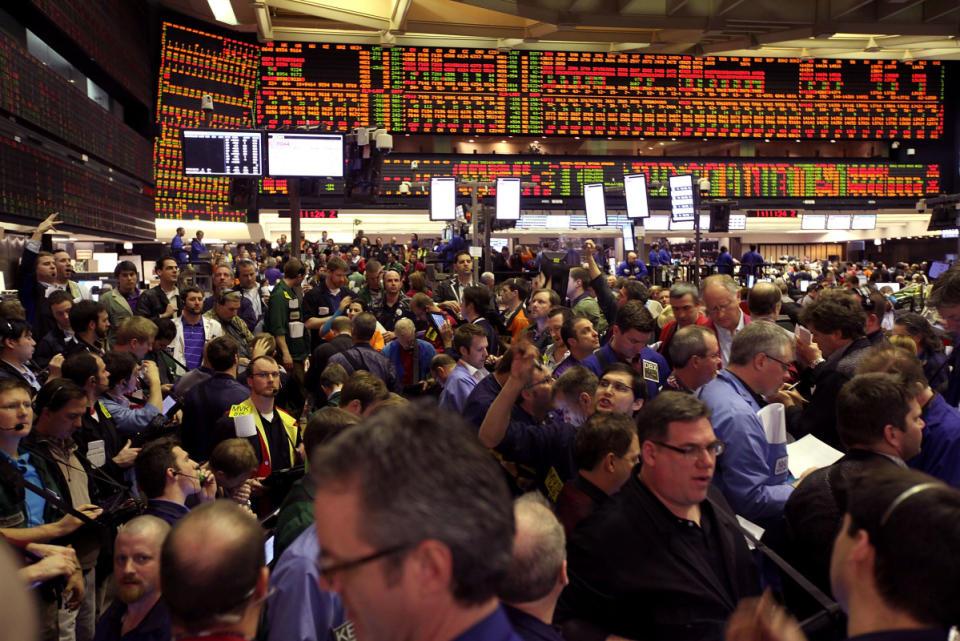Veteran analyst spotlights huge bond market signal
Since the Federal Reserve cut its key interest rate in September, the conventional wisdom has been — and still is — that interest rates will continue to move lower.
A little more slowly than many on Wall Street expected and certainly more slowly than home buyers and sellers might want.
Don't miss the move: Subscribe to TheStreet's free daily newsletter
In fact, the yield on the 10-year Treasury note finished the week at 3.962%, up from 3.754% a week ago and 3.623% on Sept. 16, before the Fed's rate decision. (At last check Monday the 10-year had ticked up past 4%.)
The rate on a 30-year mortgage jumped from 6.26% on Oct. 3 to 6.53% a day later because of the stronger-than-expected jobs report on Friday.
Federal Reserve Chairman Jerome Powell says two more rate cuts are ahead this year, probably 0.25 percentage point at the Fed's November meeting and again at its December meeting.
Related: Tesla drops bombshell ahead of anticipated robotaxi event
But deep in the bowels of money markets, the real cost of money is a question that is being fiercely debated. It will affect all rates, even your mortgage.
You can see the fight in the futures trading on the 10-year Treasury note, the all-important ingredient in the recipe of what makes a mortgage rate.
A futures contract works like this: Someone wants to sell the Standard & Poor's 500 index, crude oil, gold or corn some time in the future.
Let's work with crude oil.
Our trader can lock in a price on a futures exchange by buying a contract to deliver the oil at a specific price at a specific date in the future.
If the asset price goes up, she can sell her contract on the exchange, sell her oil, and keep the difference as profit.
At the same time, a speculator thinks the S&P 500 is going down. So, she buys a contract to buy the commodity at the current price. If the price falls, she buys the contract back, buys what she wants at the lower price, and makes a profit on the difference.
Related: Veteran investment strategist puts 3 top stocks in focus
Exchanges exist to facilitate both parties' transactions so that the final transaction goes smoothly and rarely results in the commodity actually being delivered.
Futures — or something like futures — exist worldwide for a reason. Someone has something to sell or wants to buy something and wants to control her risks. And someone else is willing to take the bet.
It's important to note that futures trading doesn't directly affect bond and stock trading. However, it does give everyone strong signals about where prices may be headed.
The battle over 10-year yields
The fight in the 10-year Treasury market is over this reality: If interest rates fall, the price of Treasury notes will go up, and if interest rates go up, the value of the notes will fall.
The fight now, according to Las Vegas-based futures trader Carley Garner, can be seen on the Chicago Board of Trade, where futures contracts on 10-year Treasurys are traded. (Garner is a contributor to TheStreet.com Pro.)
The 10-year Treasury contract is one of the world's biggest.

Scott Olson/Getty Images
Many big-pocketed investors are betting with Fed Chairman Jerome Powell that interest rates are headed lower, she says. So, as rates fall, Treasury note values will rise.
At the same time, a growing cadre of speculators sees a good chance that rates are headed higher in the long run. Partly, this is because business and individual credit demands are soaring, and partly, it's the cost of critical materials like crude oil.
And also, partly, the fear is that government deficits worldwide are soaring and could become more difficult to finance. The national U.S. debt equals 121% of U.S. gross domestic product and is rising. In Japan, government debt is 262% of GDP.
So, she wrote in a post last week, "Speculators are aggressively fighting the Fed and are outright insulting them with blatant expectations of higher yields."
Fund manager buys and sells:
The speculators are ahead — for now
Speculators now control billions in futures contracts selling short the Treasury note. Those are bets on the price falling.
The price of the December contract on 10-year Treasurys has fallen about 3.2% since peaking at $115.20 on Sept. 18.
Which means the speculators are winning for now. And interest rates are rising. And as rates rise, the value of stocks, bonds, crude oil and your home can fall.
So, yes, the stakes are big. OK, huge. The open interest on the 10-year futures on Friday was 4,857,685 contracts. One contract has a face amount of $100,000. Which means, theoretically, the value of all the contracts now trading is nearly $650 billion.
Someone will win. If rates ultimately fall, that will mean the Fed has finally won out. And speculators will be stuck with billions of dollars of losses for fighting them.
Related: The 10 best investing books, according to our stock market pros